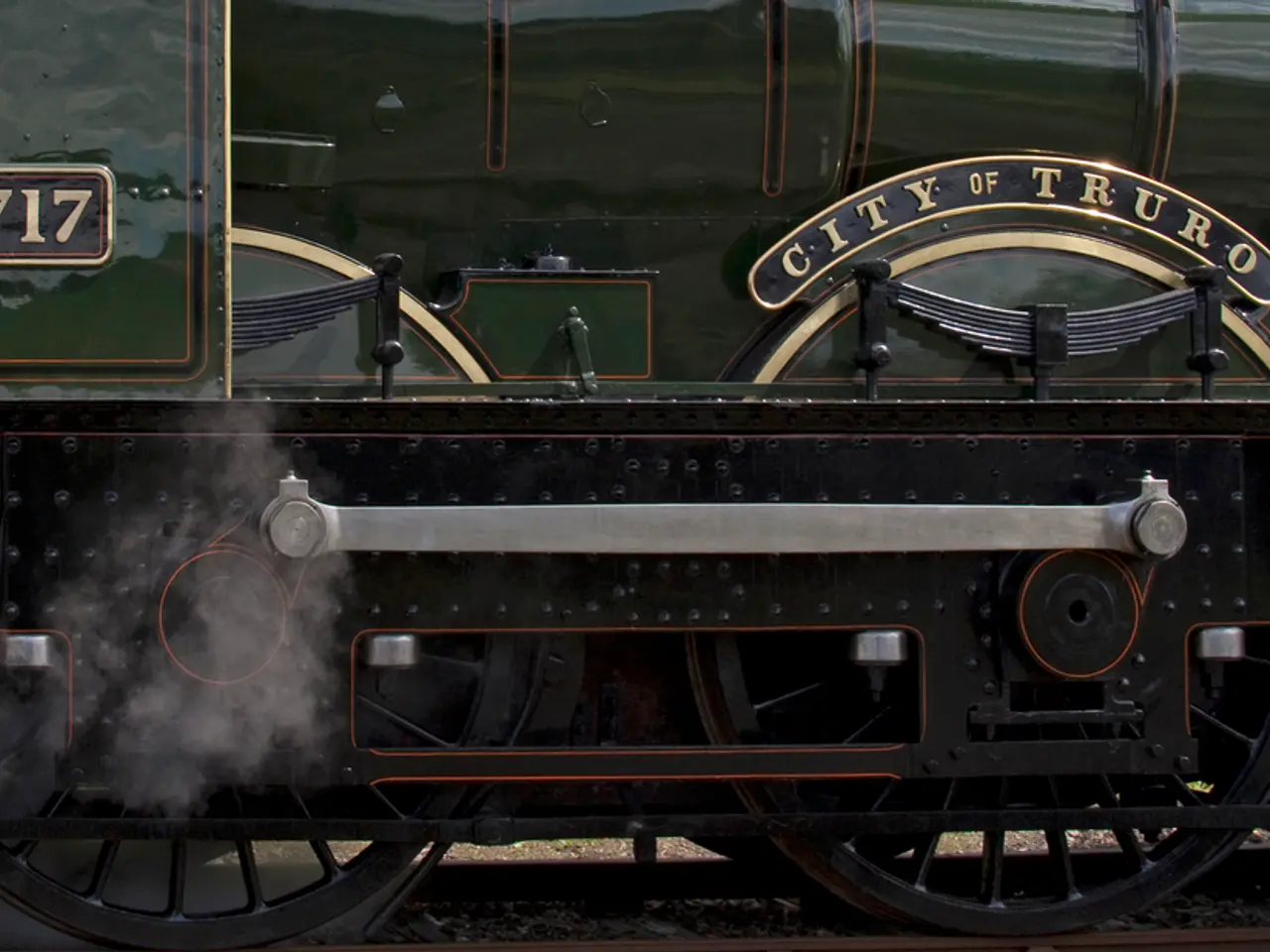Deutsche Bahn: Out with the Old, In with the New - Updated Seating Arrangement on Trains
German Railway Company denies reports of seat cancellations
It seems Deutsche Bahn has plans to revamp its fleet, according to reports that surfaced recently. But don't worry, passengers! Rumors of a massive seat cut are just that - rumors.
In a counter statement, Deutsche Bahn affirmed that they are not planning to slash 21,000 seats in long-distance traffic. In fact, the railway giant stated that the number of seats available to passengers will increase by 2036.
Initial reports, based on an alleged internal company document, suggested Deutsche Bahn was considering reducing the number of seats in long-distance traffic from the current 265,000 to 244,000 by 2036. This proposal would have meant the loss of 23,000 seats in older Intercity trains (IC) and a gain of 2,000 seats in the ICE fleet. With ICE trains set to run on routes previously served by IC trains, this shift could have left many passengers wondering about their seats.
However, Deutsche Bahn has clarified that the numbers cited in the report refer to seats in the existing fleet, not the daily available seats. The strategy, it appears, involves phasing out older and faulty vehicles to make way for newer, more efficient trains. Deutsche Bahn has reiterated its commitment to nationwide transportation, assuring all that they stand "firmly behind a nationwide transport offering."
This modernization drive is part of a larger investment plan by Deutsche Bahn, with €150 billion in government funding earmarked for upgrading rolling stock, infrastructure, signaling, and station facilities. The railway giant is also focusing on improving efficiency and capacity by modernizing 100 stations annually through 2027 and implementing digital signaling technologies like ETCS.
These upgrades will support faster, more reliable, and more flexible operations, enabling Deutsche Bahn to replace older trains with newer, more advanced rolling stock efficiently. During major construction phases, alternate routes and bus replacements will be provided to maintain long-distance train service, though travel times might increase temporarily.
The overall aim of these infrastructure improvements is to facilitate increased train frequency and larger, more comfortable trains, which should help mitigate any potential loss of seat availability resulting from the retirement of older rolling stock. Deutsche Bahn’s ongoing renovation projects are part of addressing the aging fleet and fragile track network, with enhanced reliability and capacity after these upgrades expected to benefit passengers with better seat availability and travel experience in the long term.
In conclusion, the phasing out of older trains by Deutsche Bahn is part of a comprehensive modernization strategy that includes upgrading infrastructure and signaling systems. While temporary disruptions and longer travel times may occur during renovation periods, the long-term goal is to increase capacity and improve seat availability on long-distance routes by introducing newer trains and optimizing infrastructure. This coordinated approach reflects Deutsche Bahn’s commitment to providing a better travel experience for passengers in the years to come.
Sources:- ntv.de- lme/dpa
Additional Information:
Deutsche Bahn’s modernization and renewal programs include upgrading key long-distance routes and infrastructure, such as the Hamburg–Berlin line and the Berlin–Hanover line. As part of a large-scale investment plan, Deutsche Bahn is also modernizing 100 stations annually through 2027 and upgrading critical systems such as interlockings and digital signaling to improve rail traffic efficiency and capacity.
Deutsche Bahn's investment in digital ticketing and integrated European rail systems, set to launch in late 2025, should also optimize capacity utilization on long-distance services, benefiting passengers with better seat availability and travel experience.
- Deutsche Bahn's updating of their seating arrangement on trains is part of a broader industry policy involving finance, as they've earmarked €150 billion in government funding for upgrading rolling stock, infrastructure, signaling, and station facilities.
- In the context of Deutsche Bahn's community policy, the phasing out of older trains and implementation of digital signaling technologies will support improved employment opportunities, as they aim to modernize 100 stations annually through 2027, potentially creating new jobs in the transportation sector.




